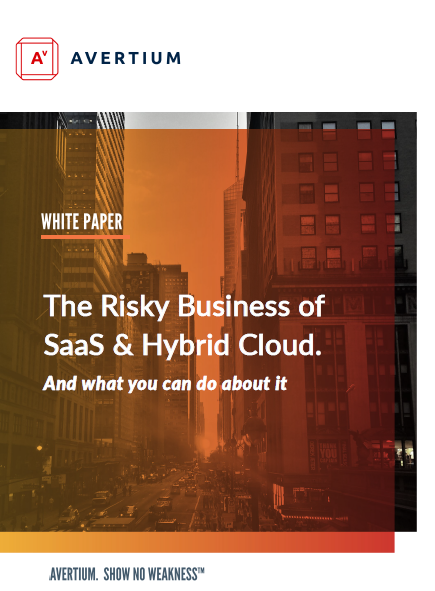Demystifying Zero Trust: What is Zero Trust Security, and how can it bolster your environment?
The zero trust security model delivers exactly what the name promises: it's an IT security concept that specifies no access is allowed until the successful completion of authentication and authorization processes. The default security assumption is that all users and devices are suspect and not to be trusted, even those within a network perimeter until definitively proven otherwise. “Least privilege” ensures access is restricted to only what is required.
Zero trust networking is a paradigm shift that's an outgrowth of an increasingly perilous digital environment, one filled with rapidly proliferating threats, perpetual risk, and an escalating potential for damages. It abandons the traditional perimeter-based security approach that focuses on defending against outside threats; it does not assume anything inside the perimeter is safe.
As the technologies that support zero trust implementation filter into the mainstream, adoption is accelerating as enterprises are eager to realize the benefits of superior security, productivity, and modernization.
Related Reading: Zero Trust Beyond VPN Replacement: Earning the Most Value for Your Investment
Benefits of a Zero Trust Security Model
Zero trusts delivers benefits to enterprises that extend beyond security. Enterprises that commit to adopting zero trusts can build sustainable value and reap tangible rewards, including:
Enhanced Data Protection
The zero trust model demonstrates improved resiliency against a variety of threats and attack vectors aimed specifically at system penetration and data exfiltration. Enforcing a protocol that restricts network and/or data access to authenticated and authorized users and devices limits your exposure to potentially disastrous data breaches and security events.
Faster Breach Detection
Zero trust allows for a higher level of visibility into your security environment, by insisting that users and devices be visible for authentication and authorization. This elevated stance spotlights unauthorized users inside your systems, at the perimeter, and potentially beyond, allowing faster detection from your security systems and administrators.
Related Reading: Digging In: Why Root Cause Analysis is Crucial in IR
Enhanced Containment Viability
Rigorous enforcement of least privilege and need-to-know protocols creates a security environment that is hyper-capable of containing breaches. In traditional environments, a single trusted but compromised device within a network can allow unfettered access, and result in catastrophic damages.
Zero trust enforces safeguards that continuously evaluate entitlements, require authentication and authorization, and thereby boost the ability to contain penetration to discrete segments of your environment.
Superior Incident Response
Faster detection and improved containment create the foundation for more effective incident response. Managing the fallout from individual incidents, and then eliminating the vulnerabilities that caused them, requires speed and control.
Zero trust deploys a structure that allows incident response to begin sooner, enforces containment more effectively, and allows response to begin from a position of strength that delivers better security results across your process.
Download: Everything You Need to Know to Create An Effective Incident Response Plan
Reduced Security Complexity
Traditional perimeter-based security solutions are hobbled by, 1) defining the “perimeter” in an increasingly complex and virtual environment, and 2) the requirement to manage a vast catalog of sometimes conflicting devices, appliances, technologies, utilities, processes, and controls.
Zero trust reduces complexity in your security stack by encompassing functions within a cloud-based architecture: everything is oriented and managed within a single, simplified context.
Related Reading: Monitoring Telework Security with Disappearing Network Perimeters
Elevated User Experience
The traditional “choose one” security dilemma – you can have strong security, or you can have a productive user experience – is eliminated within a zero-trust framework.
Your enterprise can enjoy access security without impacting productivity or ease-of-use, thanks to integrated solutions that operate securely across different devices, applications, networks, and locations.
Accelerated Cloud Migration
Enterprises seeking to modernize applications and infrastructure are increasingly embracing cloud solutions, including software-as-a-service (SaaS) and infrastructure-as-a-service (IaaS).
Zero trust solutions migrate security to the cloud, where everything can be efficiently integrated and managed. Your enterprise can enjoy improved access, security, productivity, and capabilities within a fully implemented cloud architecture that includes zero trust security solutions.
Related Reading: Cloud Security Using Defense in Depth
Challenges to Implementing a Zero Trust Network
There are three primary requirements for enterprises to engineer an effective zero-trust network architecture, which can create the following challenges to successful implementation:
- Identify and organize sensitive systems and data; proper segmentation of data is needed to fulfill the requirements of zero trust.
- Ensure legacy/existing system and process compatibility; peer-to-peer, hybrid cloud and decentralized operations that break the least privilege model require significant effort to integrate within a zero trust architecture.
- Perhaps most critical is the challenge of successfully defining entitlements, by fully understanding which data needs to be accessed and by whom. This requires a significant effort to audit operational workflows, enforce stringent data classification strategies, and translate those processes into effective definitions for need-to-know privileges that define exactly who is entitled to certain data, and who is not. This is a challenge that has stymied organizations for decades.
These requirements are typically only a matter of resource allocation: enterprises that commit to providing sufficient resources should be able to manage the challenges and create a strong foundation for zero trust implementation.
Is Zero Trust Security Right for Your Organization?
Enterprise adoption of zero trust security solutions is accelerating across segments and industries. If you're looking for enhanced data protection, greater enterprise visibility, reduced complexity, less demanding security workloads, and support for cloud migration, zero trust could be one element in your transformation journey.
Are you ready to apply the rigor of a zero trust security model to your organization? Contact us to start the conversation.

The Risky Business of SaaS + Hybrid Cloud
SaaS solutions and the hybrid cloud improve business operations but increase security risks. Download this white paper on how to mitigate these risks. Download Now